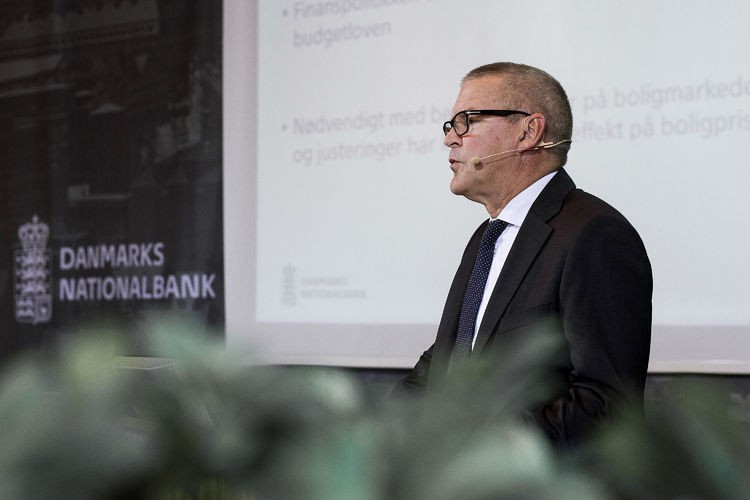Danish Central Bank Governor Lars Rohde Pledges to Defend Currency Peg
Post on: 21 Июль, 2015 No Comment

Krone’s peg to the euro came under strain after ECB announced its bond-buying program
Updated March 12, 2015 11:07 a.m. ET
Denmark’s central bank is committed to defending the krone’s peg to the euro, and further cuts in its benchmark interest rate, as well as interventions in the foreign exchange markets, remain options, Governor Lars Rohde said Thursday.
The krone’s peg to the euro came under strain after the European Central Bank announced a large-scale bond-buying program in January, sending the shared currency spiraling downward. The long-held exchange-rate policy also came into focus because of Switzerland’s surprise decision in mid-January to abandon its own currency cap, catching many investors off guard.
In defense of the peg, which has been in place since 1982, the central bank cut its deposit rate four times in the space of three weeks, with the final move coming at the beginning of February. It also intervened heavily in the currency markets, buying foreign currency worth 106.3 billion Danish kroner ($15.39 billion) in January. It bought a further 168.7 billion Danish kroner in February
Speaking in London, Mr. Rohde said the central bank hadn’t had to intervene in the final weeks of February, and pledged to defend the peg, which he said had served the Danish economy well since its introduction.
More on the Danish peg
“We are able and we are willing to do whatever it takes to defend the peg,” he said. “The peg is the cornerstone of economic policy in Denmark and has very broad based support.”
The central bank seeks to hold the euro’s exchange rate within 2.25% either above or below 7.46038 kroner to keep inflation low and provide stability for exporters.
We are able and we are willing to do whatever it takes to defend the peg. The peg is the cornerstone of economic policy in Denmark and has very broad-based support.
—Governor Lars Rohde.
The central bank’s last reduction in the rate it pays to depositors brought it to minus 0.75%, which Mr. Rohde said was the lowest in the world. But he indicated further cuts were possible.
“We have not seen any hoarding of cash,” he said. “There is some lower bound for negative interest rates, but we haven’t found it yet.”
Mr. Rohde also said the central bank could resume sales of kroner for euros if the peg were to come under pressure again.
“There’s no upper limit on purchases of foreign currencies,” he said. “We have all the instruments to handle the situation. We are able and we are willing to do it.”

In addition to rate cuts and foreign exchange interventions, in late January Denmark took the novel step of suspending the issuance of government bonds, seeking to deter foreign investment in Danish assets that would strengthen the krone.
Mr. Rohde said that policy was equivalent to quantitative easing, the policy embarked on Monday by the ECB, in which the central bank buys government bonds with newly created money.
“The Danish government has almost two years of free financing requirements as a deposit with the Danish central bank,” he said. “This works like a QE operation. If a government is paying back on old bond issues, they finance it by drawing money from the central bank. But that is almost the same as issuing bonds that are bought by the central bank.”
He added that if bond sales were to be suspended throughout 2015, the amount of quantitative easing involved would be roughly equivalent to that carried out by the ECB.
Mr. Rohde said the Swiss National Bank ’s Jan. 15 decision to abandon its cap on the Swiss franc’s exchange rate against the euro had been a “genuine surprise,” and prompted foreign investors to speculate that Denmark might be forced to take similar action as the euro continued to weaken.
But Mr. Rohde stressed that “we are not Switzerland,” noting big differences in the degree of popular support for and long-term commitment to the currency policy in the two countries.
“The Swiss (arrangement) was not a peg, it was a ceiling,” he said. “It was declared to be temporary. And it was not part of an understanding by all parties that this was the way we should go on.”














